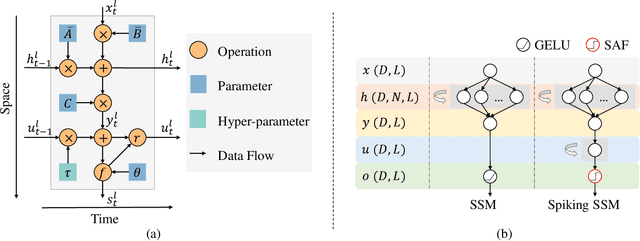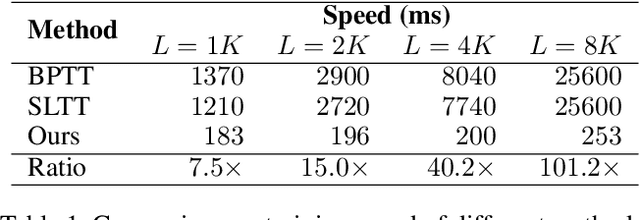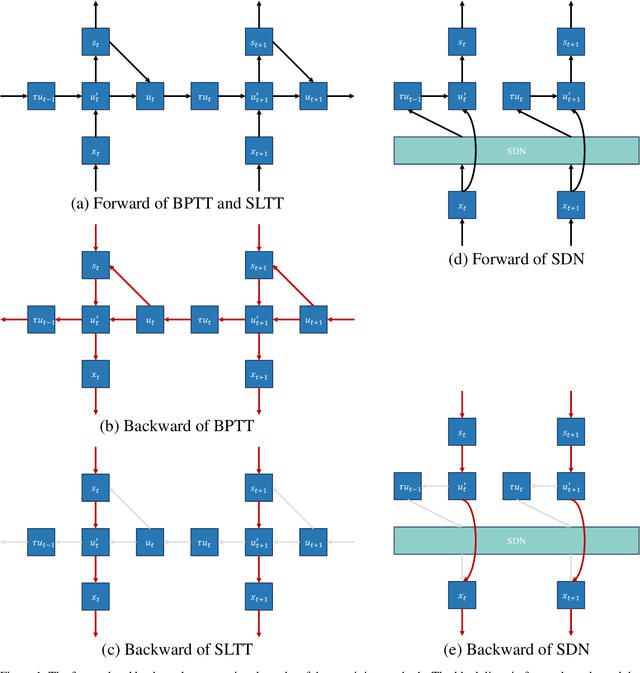Renzhuo Huang
SpikingSSMs: Learning Long Sequences with Sparse and Parallel Spiking State Space Models
Aug 27, 2024



Abstract:Known as low energy consumption networks, spiking neural networks (SNNs) have gained a lot of attention within the past decades. While SNNs are increasing competitive with artificial neural networks (ANNs) for vision tasks, they are rarely used for long sequence tasks, despite their intrinsic temporal dynamics. In this work, we develop spiking state space models (SpikingSSMs) for long sequence learning by leveraging on the sequence learning abilities of state space models (SSMs). Inspired by dendritic neuron structure, we hierarchically integrate neuronal dynamics with the original SSM block, meanwhile realizing sparse synaptic computation. Furthermore, to solve the conflict of event-driven neuronal dynamics with parallel computing, we propose a light-weight surrogate dynamic network which accurately predicts the after-reset membrane potential and compatible to learnable thresholds, enabling orders of acceleration in training speed compared with conventional iterative methods. On the long range arena benchmark task, SpikingSSM achieves competitive performance to state-of-the-art SSMs meanwhile realizing on average 90\% of network sparsity. On language modeling, our network significantly surpasses existing spiking large language models (spikingLLMs) on the WikiText-103 dataset with only a third of the model size, demonstrating its potential as backbone architecture for low computation cost LLMs.
Evolutionary Spiking Neural Networks: A Survey
Jun 18, 2024Abstract:Spiking neural networks (SNNs) are gaining increasing attention as potential computationally efficient alternatives to traditional artificial neural networks(ANNs). However, the unique information propagation mechanisms and the complexity of SNN neuron models pose challenges for adopting traditional methods developed for ANNs to SNNs. These challenges include both weight learning and architecture design. While surrogate gradient learning has shown some success in addressing the former challenge, the latter remains relatively unexplored. Recently, a novel paradigm utilizing evolutionary computation methods has emerged to tackle these challenges. This approach has resulted in the development of a variety of energy-efficient and high-performance SNNs across a wide range of machine learning benchmarks. In this paper, we present a survey of these works and initiate discussions on potential challenges ahead.
 Add to Chrome
Add to Chrome Add to Firefox
Add to Firefox Add to Edge
Add to Edge